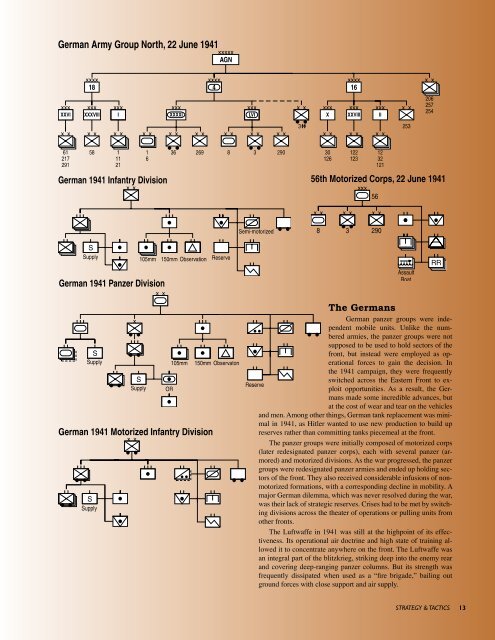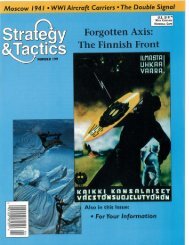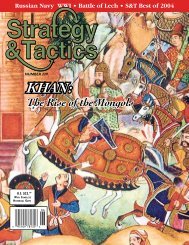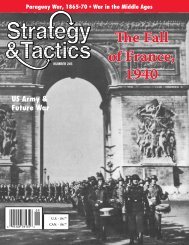COUNTERSTROKE AT SOLTSY - Strategy & Tactics Press
COUNTERSTROKE AT SOLTSY - Strategy & Tactics Press
COUNTERSTROKE AT SOLTSY - Strategy & Tactics Press
Create successful ePaper yourself
Turn your PDF publications into a flip-book with our unique Google optimized e-Paper software.
The Germans<br />
German panzer groups were independent<br />
mobile units. Unlike the numbered<br />
armies, the panzer groups were not<br />
supposed to be used to hold sectors of the<br />
front, but instead were employed as operational<br />
forces to gain the decision. In<br />
the 1941 campaign, they were frequently<br />
switched across the Eastern Front to exploit<br />
opportunities. As a result, the Germans<br />
made some incredible advances, but<br />
at the cost of wear and tear on the vehicles<br />
and men. Among other things, German tank replacement was minimal<br />
in 1941, as Hitler wanted to use new production to build up<br />
reserves rather than committing tanks piecemeal at the front.<br />
The panzer groups were initially composed of motorized corps<br />
(later redesignated panzer corps), each with several panzer (armored)<br />
and motorized divisions. As the war progressed, the panzer<br />
groups were redesignated panzer armies and ended up holding sectors<br />
of the front. They also received considerable infusions of nonmotorized<br />
formations, with a corresponding decline in mobility. A<br />
major German dilemma, which was never resolved during the war,<br />
was their lack of strategic reserves. Crises had to be met by switching<br />
divisions across the theater of operations or pulling units from<br />
other fronts.<br />
The Luftwaffe in 1941 was still at the highpoint of its effectiveness.<br />
Its operational air doctrine and high state of training allowed<br />
it to concentrate anywhere on the front. The Luftwaffe was<br />
an integral part of the blitzkrieg, striking deep into the enemy rear<br />
and covering deep-ranging panzer columns. But its strength was<br />
frequently dissipated when used as a “fire brigade,” bailing out<br />
ground forces with close support and air supply.<br />
strategy & tactics 13







